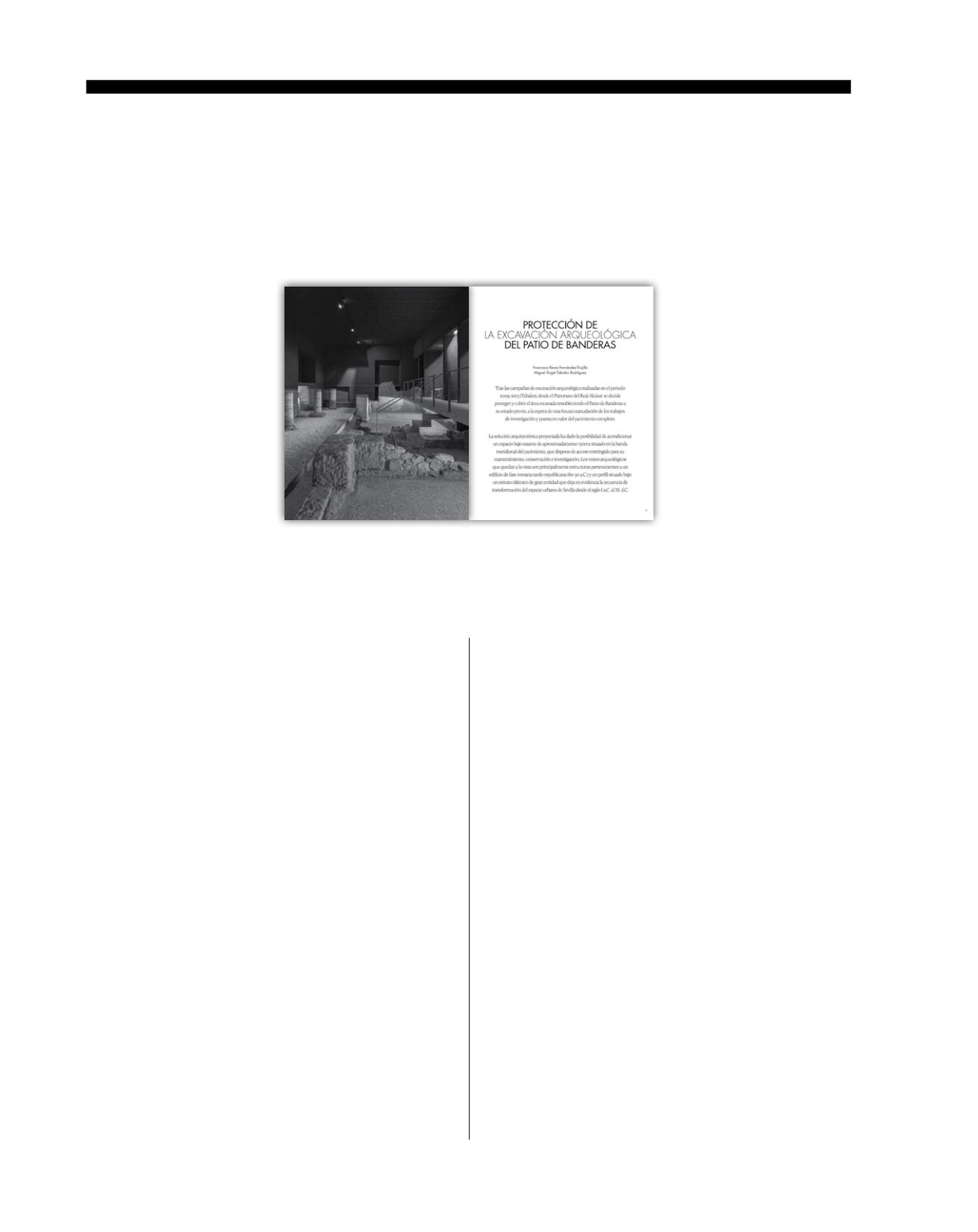
255
T
he Patio de Banderas has been subject to various re-
search campaigns performed by Bendala Negueruela
(1976) and Tabales (2009- 2014) that affected two spe-
cific areas of the square: a small space located under the
public road in the northwest corner (currently within an archaeo-
logical crypt of approximately 70 m2) and a surface area of 675
m2, coinciding with the central area of the square, paved with
packed crushed rock (fig. 1).
The archaeological intervention made possible to obtain data
on occupation with a wide chronology covering a period of two
thousand years, from the ninth century BC to the twelfth A.D.
In addition to the stratigraphic sequence itself —contained in a
depth ranging over six meters— the remains belonging to the late-
Republican Roman period (first century BC.) stand out for their
scientific value, materiality, level of preservation and adaptation to
a possible visit. It is a relatively well preserved property, perhaps a
port warehouse, with elevations in some points of more than two
meters high.
In 2012, being the research works partially completed (Fig. 2), a
proposal for action aimed at the protection and enhancement of
the archaeological remains was drafted with the premise that the
incidence of emergent elements on the physiognomy of the public
space of the Patio de Banderas was minimal.
Due to budgetary reasons, in October 2013 the Patronato decided
to cover the excavated area and to restorate the Patio de Banderas
to its previous status, while waiting for a future resumption of the
research and development works of the project for the archaeo-
logical crypt. In order to comply with the request of the Territo-
rial Department for Education, Culture and Sport of the Junta de
Andalucía, a second project which aims to define the system of
protection and cover of the excavated area and the archaeological
remains, as well as the development works for the recovery of the
pre-existing square, is drawn up in February 2014.
The proposed structural solution has provided the ability to pre-
pare a space of about 130m2 on the southern side of the site, as-
sessing the possibility of its future adaptation for public visits. Cur-
rently, the restricted access for its maintenance, preservation and
research is resolved through a discreet staircase deployed between
the rows of trees in the square. The project was favourable report-
ed by the Provincial Commission for Historic Heritage in June 2014
and the works were completed in past July 2015.
Patio de Banderas. The archaeological
excavation
The Patio de Banderas (fig. 3) occupies a section of the parade
ground of the medieval alcázar and reaches our days as a public
space surrounded by civilian buildings which, in their north and
east fronts, are directly supported by the ancient walls. A perimeter
road roadway encloses a pedestrian lounge-space in double rows
of orange trees that protect and delimit an area paved with packed
crushed rock. The center of gravity of this square -with a geom-
etry similar to a deformed rectangle- is occupied by an ornamental
ARCHAEOLOGY
PROTECTION OF THE ARCHAEOLOGICAL EXCAVATION
OF PATIO DE BANDERAS
Francisco Reina Fernández-Trujillo / Miguel Ángel Tabales Rodríguez
Pages 52-87


